In a poll last month, 82 percent of our audience responded that they either wear pickleball or tennis court shoes when playing pickleball. This proved that most of you understand the importance of using proper footwear for the sport you’re playing.
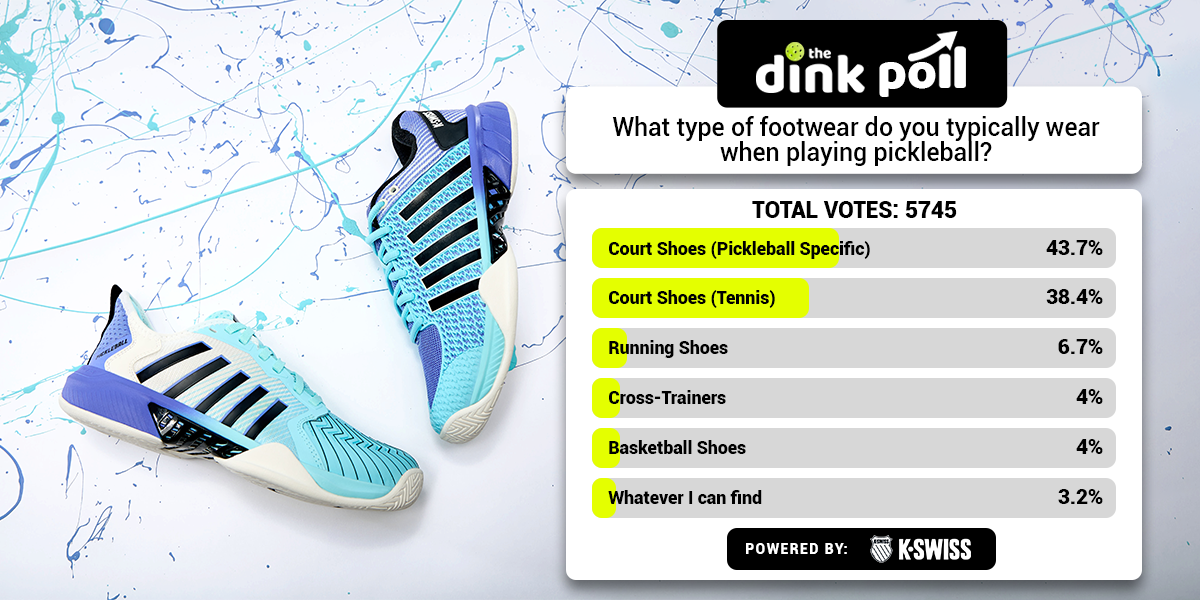
But, do you know the difference between different court shoes?
This article explores the key differences between tennis and pickleball court shoes, so you can make the best decision for your game – and your feet.
General Overview of Court Shoes
Just in case you aren’t in that 82 percent who wear court shoes, we felt it important to explain what they are.
Court shoes are a specialized type of athletic shoe designed specifically for sports played on different types of (you guessed it) courts. This could include tennis, basketball, pickleball, and more. They are typically designed to meet the unique demands of these sports, providing the right kind of support, traction, and stability to improve performance and also prevent injury.
Of course, for legal reasons, we’re not going to say shoes can prevent injury, but the idea is that they provide a better environment for your feet, joints, and overall well-being while playing court sports.
Most court shoes offer these characteristics:
- Traction and grip
- Support and stability
- Durability
- Comfort and fit
- Weight and flexibility
Let’s talk more about each of these.
Traction and Grip
The design of the outsoles and specific tread patterns is an important part of traction and grip. Generally, court shoes feature outsoles with specific tread patterns designed to prevent slipping on the court surface.
For instance, herringbone patterns (named for looking like the spine of a fish) are common in pickleball and tennis court shoes to help traction on indoor and outdoor surfaces.
Another important part of the technology for pickleball and tennis court shoes is extra rubber in high-rub areas of the shoes. For example, extra rubber compounds are used for the outsole and toe area, since many players tend to drag these parts of their feet when on the court.
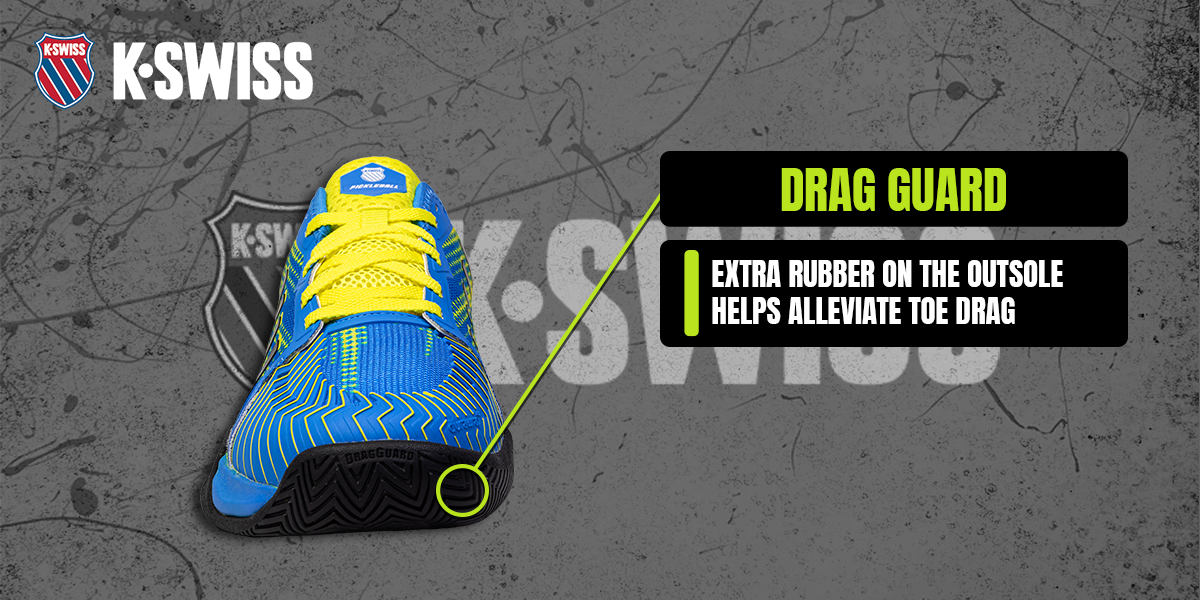
Support and Stability
One of the biggest differences between everyday sneakers and court shoes is the amount of support and stability the latter offers. Most shoes are simply designed to cover your feet, while court shoes are designed to support the quick, lateral movements that happen in both tennis and pickleball.
In tennis, the court is bigger and you often have to run or sprint greater distances with long strides.
In pickleball, especially doubles, players pivot a lot, and their strides are typically shorter and slower.
Both sports require torsional movements, so court shoes like those from K-Swiss offer a molded TPU (Thermal Plastic Unit) to create a supporting chassis that stabilizes the midfoot and improves the ability to stay stable when moving in all directions.
Pickleball court shoes are built to keep you lower to the ground in the forefoot, with elevated lateral sidewall profiles for extra lateral support.
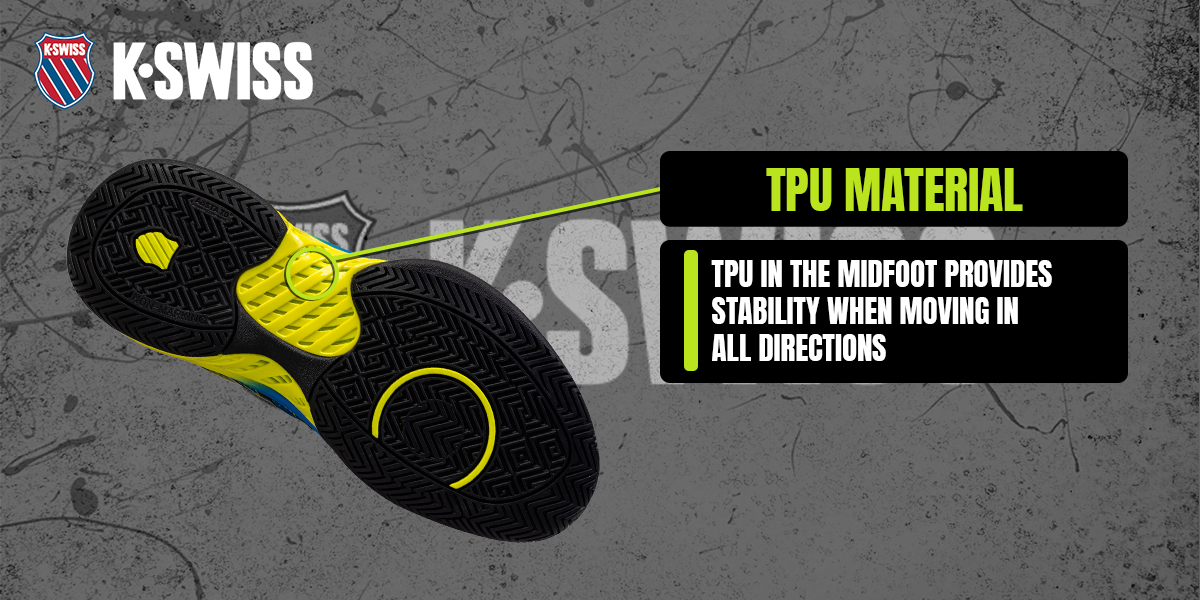
Durability
Court shoes are constructed from more durable materials than your regular everyday shoes, allowing them to withstand the rigors of court surfaces. In tennis and pickleball, this includes reinforced toe caps, abrasion-resistant outsoles, and sturdy uppers made from synthetic leather, mesh, or a combination of materials.
The construction of the shoe and how much rubber is used also makes a difference. Basketball shoes are built for stability and come in mid-cuts that could be helpful if you have weak ankles, but they are mostly designed for playing on a wood floor with the same amount of rubber material across the entire outsole.
They are typically heavier and wear out more quickly on gritty pickleball courts.
How long should court shoes last?
This is a popular question on pickleball forums. We asked the engineers at K-Swiss, and they said it was based on many variables, but essentially, you can estimate based on how much pickleball you play.
- Once a week - You should get about a year out of your pickleball court shoes.
- Two times a week - expect to get about 4-6 months of use.
- Three to five times a week - replace your shoes every 2-3 months.
They also suggest buying multiple pairs at once, which allows you to rotate them and provide proper time to dry out between uses.
Playing in dry shoes provides a more consistent feel while playing.
As far as signs of when to replace your shoes, you should look at the wear on the bottom of the shoe and if your joints are feeling more sore than usual. In either case, consider getting a new pair of shoes instead of waiting for those to completely break down—which could lead to more pain and possible injury.
Why the Right Pickleball Shoes Make a Difference
Are you wearing the proper footwear for pickleball? You’d be surprised the differences between the various court shoes and what you should look for in a pickleball shoe.
 The Dink PickleballJason Flamm
The Dink PickleballJason Flamm
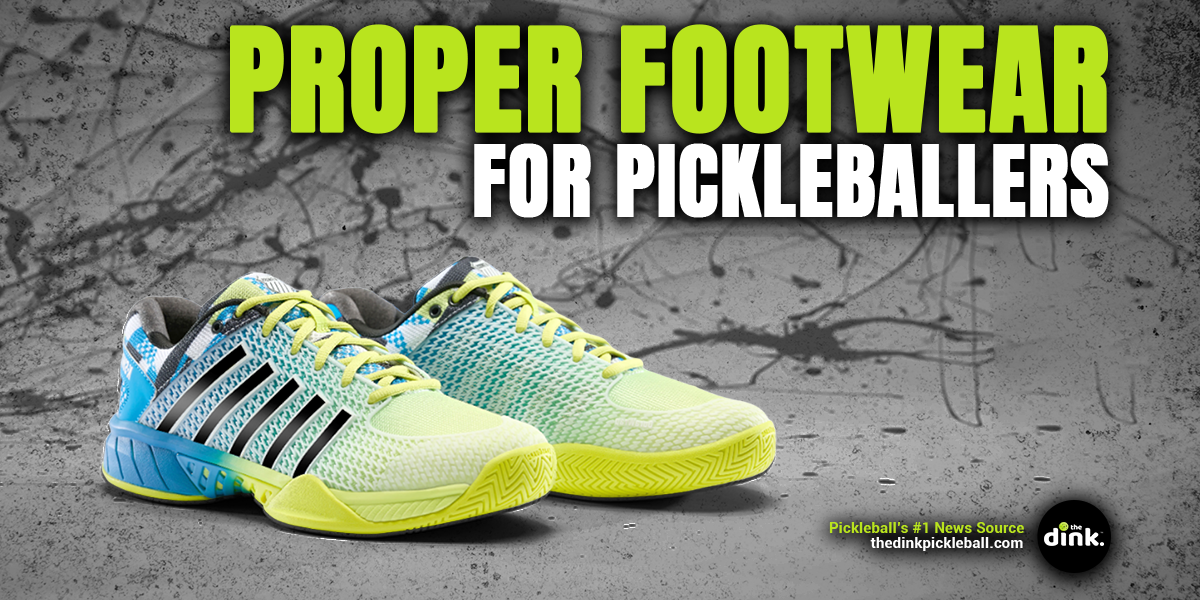
Comfort and Fit
In general, pickleball is less demanding physically than tennis or basketball. You’d think this means comfort isn’t as big of a deal with pickleball court shoes. However, because the sport is less demanding, players tend to play for longer periods of time.
So, comfort is crucial to your experience with your court shoes.
You want to find shoes that are more breathable than the average court shoe and that don’t cause your feet to slip around inside the shoe in prolonged play.
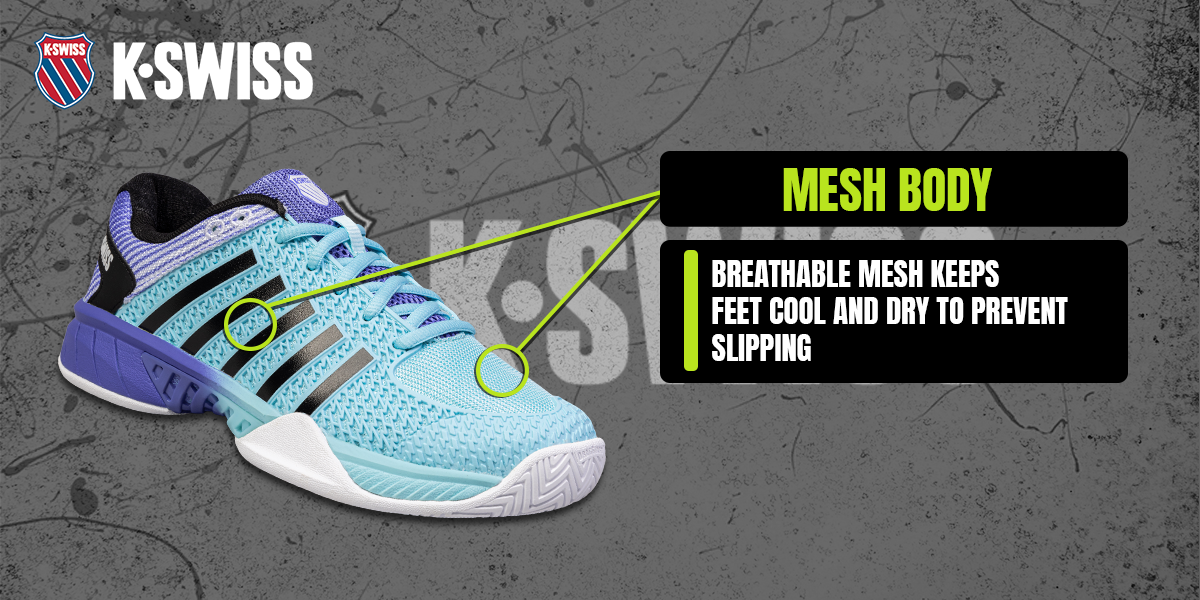
Another cause of slipping could be the fit. While you want some room in the toe box for movement, you don’t want it to be so much room that your shoes become a liability.
If you have wide feet, finding pickleball shoes that fit correctly can be a challenge. Fortunately, shoe companies like K-Swiss offer different widths for those of us (this author included) who need it. Be sure to check out their Express Light Pickleball-Wide or Hypercourt Express 2.
Both tennis and court shoes offer different levels of comfort and fit. If you're having trouble finding the right fit yourself, it’s suggested that you visit a specialty shoe store and have them help you find it.
Weight and Flexibility
Another difference between pickleball and other court shoes is where the extra rubber is placed. Basketball and other court shoes have an equal amount of rubber across the entire shoe, but because it’s uncommon for certain areas of your foot to rub against the surface while playing pickleball, shoe engineers reduce the amount of rubber in those areas. This makes pickleball court shoes lighter than other court shoes – by as much as a few ounces.
K-Swiss offers pickleball-specific court shoes
K-Swiss started making pickleball court shoes in 2020, which are almost 2 ounces lighter than tennis court shoes, to provide players the durability, comfort, and stability needed for pickleball.
Wearing the right shoes for your sport can strengthen your foundation and connection to the court, ultimately giving you more confidence with every step.
Their goal is to provide shoes that keep you on the court playing the sport you love longer.
Visit K-Swiss Pickleball to see their entire line of pickleball (and tennis) court shoes.
Anuncie Aqui / Advertise Here
Sua marca para o mundo Pickleball! / Your brand for the Pickleball world!

 English
English  Spanish
Spanish  Portuguese
Portuguese  German
German  Italian
Italian  Japanese
Japanese  French
French  Polish
Polish  Russian
Russian  Netherlands
Netherlands  Hungarian
Hungarian  Turkish
Turkish  Videos
Videos 

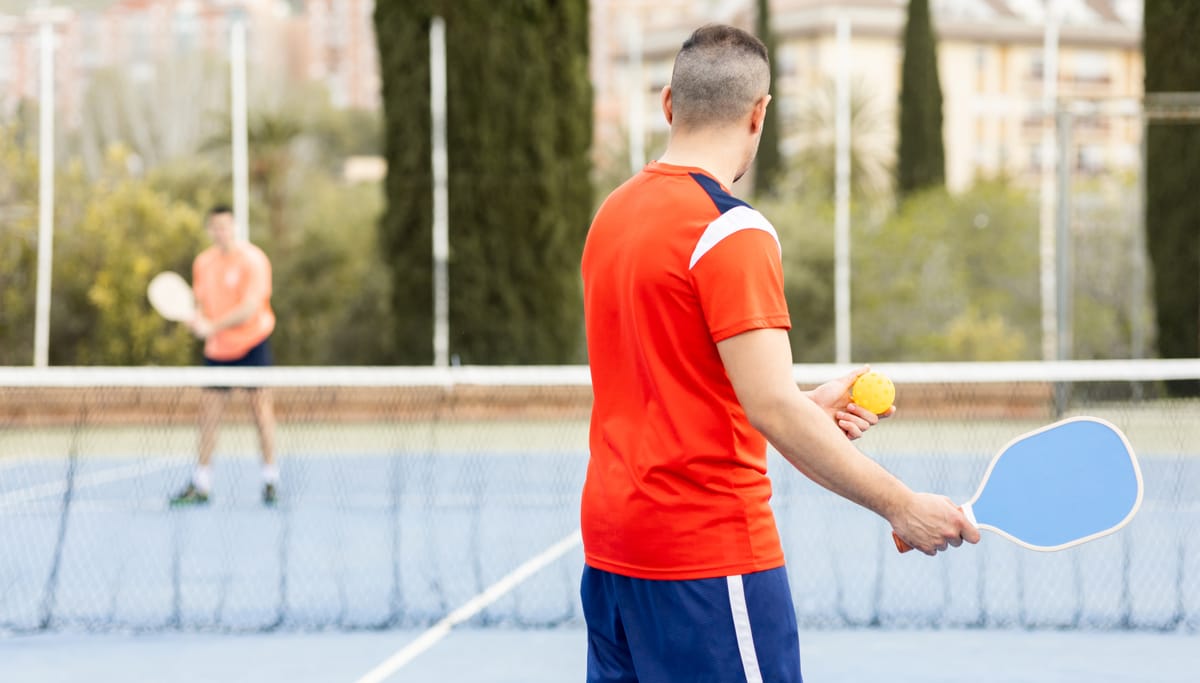
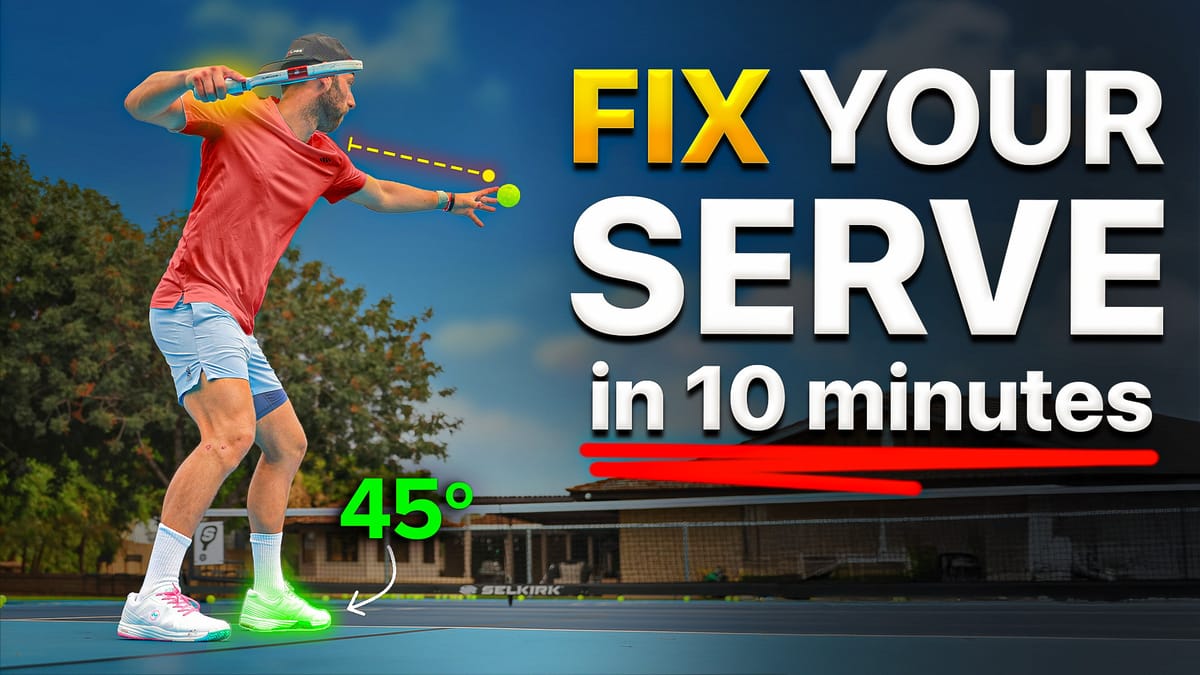
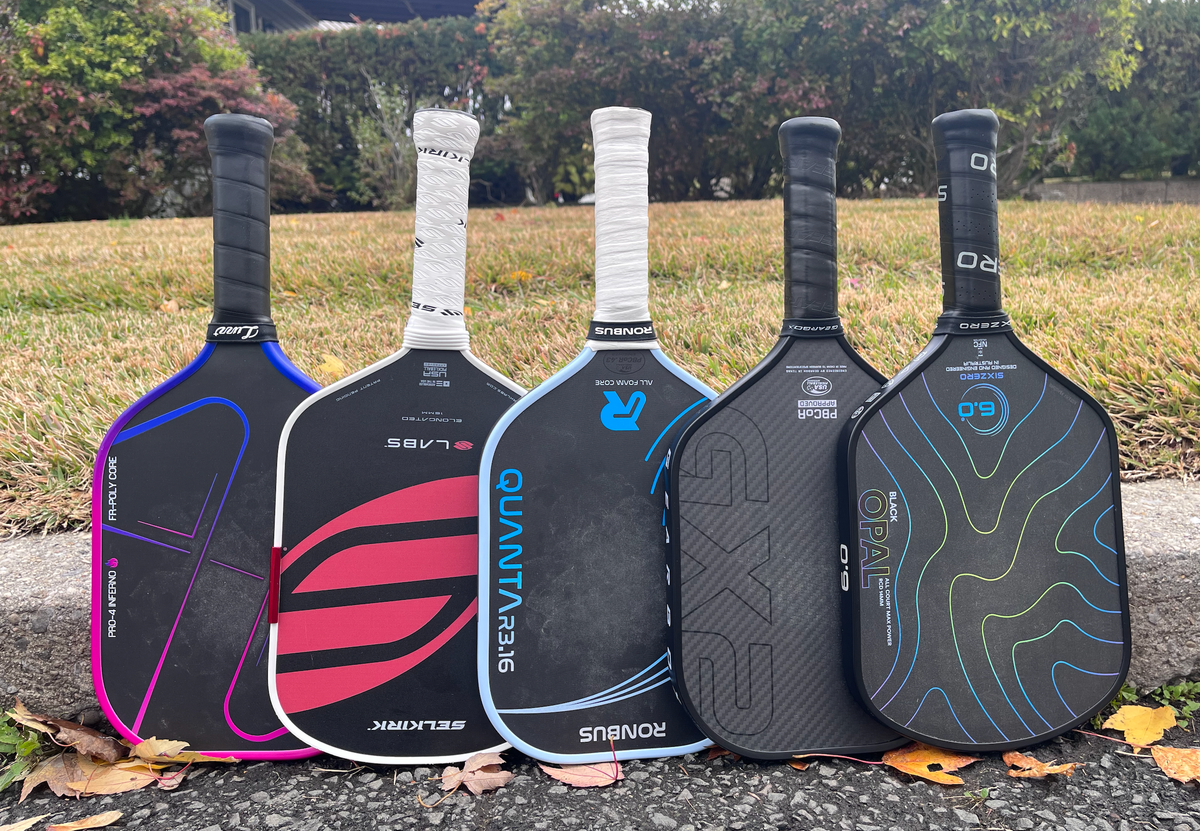




 English (US) ·
English (US) ·  Portuguese (BR) ·
Portuguese (BR) ·